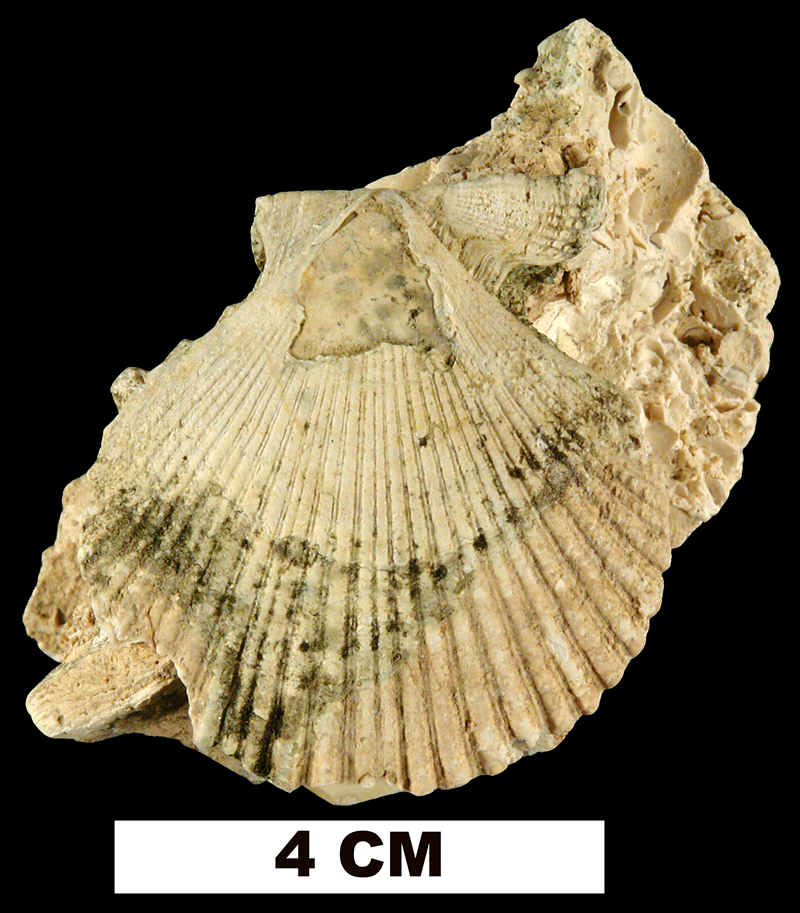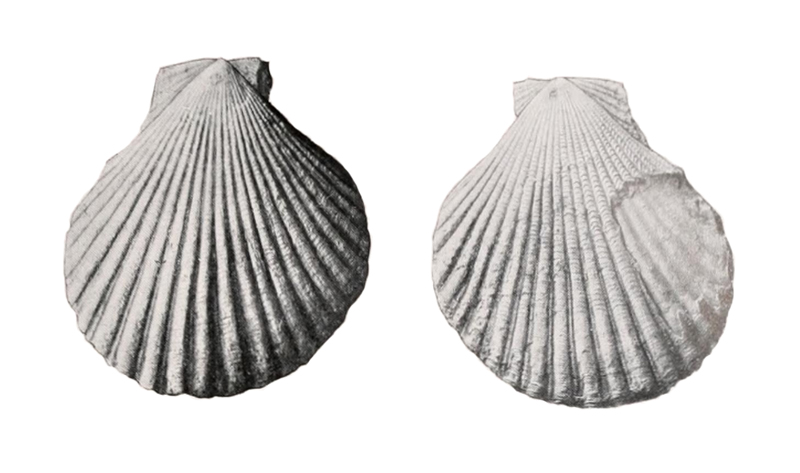
Dimarzipecten crocus

- Phylum: Mollusca
- Class: Bivalvia
- Order: Pectinida
- Family: Pectinidae
- Genus: Dimarzipecten
- Species: Dimarzipecten crocus (Cooke, 1919)
Geological Range
Early Miocene; Extinct.
Paleogeographic Distribution
Southern Florida to northern Florida.
Remarks
Original Description (from Cooke, 1919, p. 135):
"The following is a description of this species:
Shell equivalve, inequilateral, moderately convex; about 22 round ribs, separated by slightly narrower interspaces; surface of the ribs with curved imbricating spines, convex towards the umbones, and with very faint radiating striae; interspaces with sculpture of fine, close-set, concentric striae; near the ventral margin a small thread appears in each interspace; submargins depressed, ornamented with small radial threads and fine concentric striae; ears moderately large, subequal, with radial, nodose riblets.
Alt., 39 mm.; lat., 36 mm.; diam., 14 mm.
Locality. Roadside, descent to Crocus Bay, Anguilla, station 6893, also 6894 and 6965, Vaughan.
Geologic horizon. Oligocene.
Type. U. S. Nat. Mus. No. 167079."
To access this description in its original formatting through the Biodiversity Heritage Library, click here.
Stratigraphic Occurrences
- Early Miocene
- Arcadia Formation (Tampa Member) (S. FL) (note: fm. extends into upper Oligocene)
- Parachucla Formation (N. FL)
- Penney Farms Formation (N. FL)


